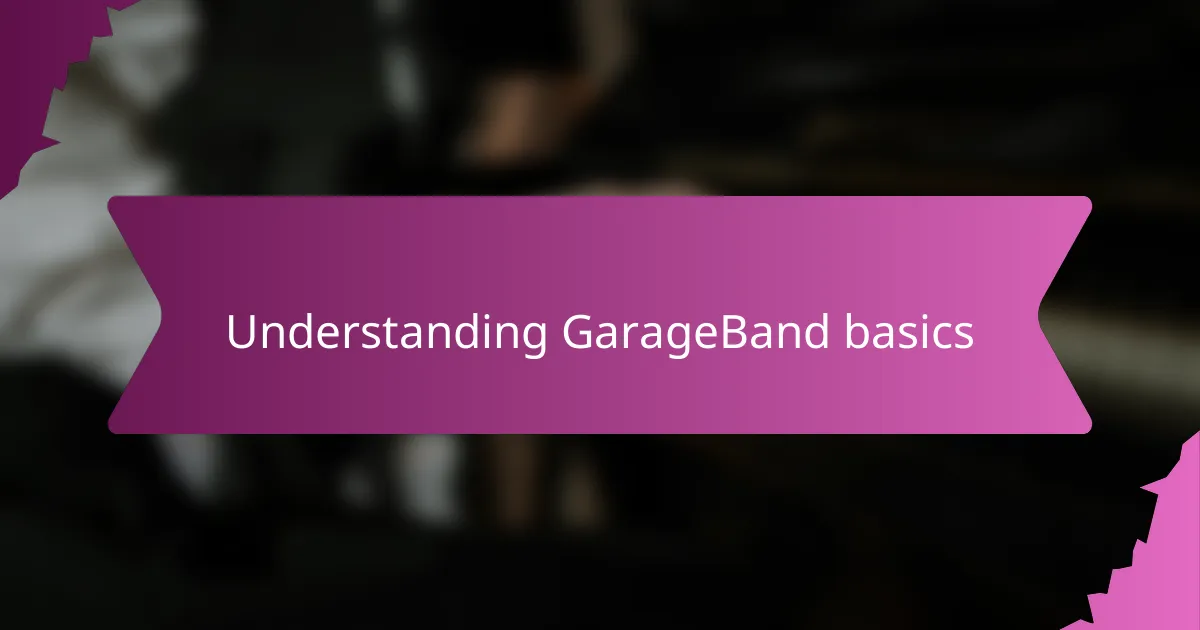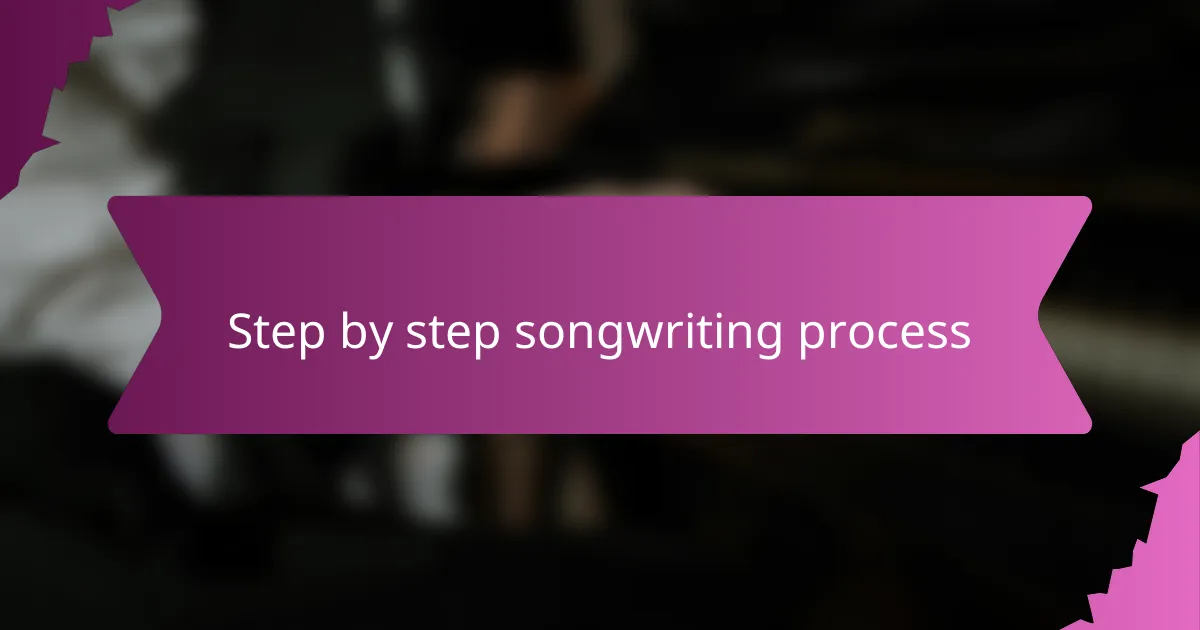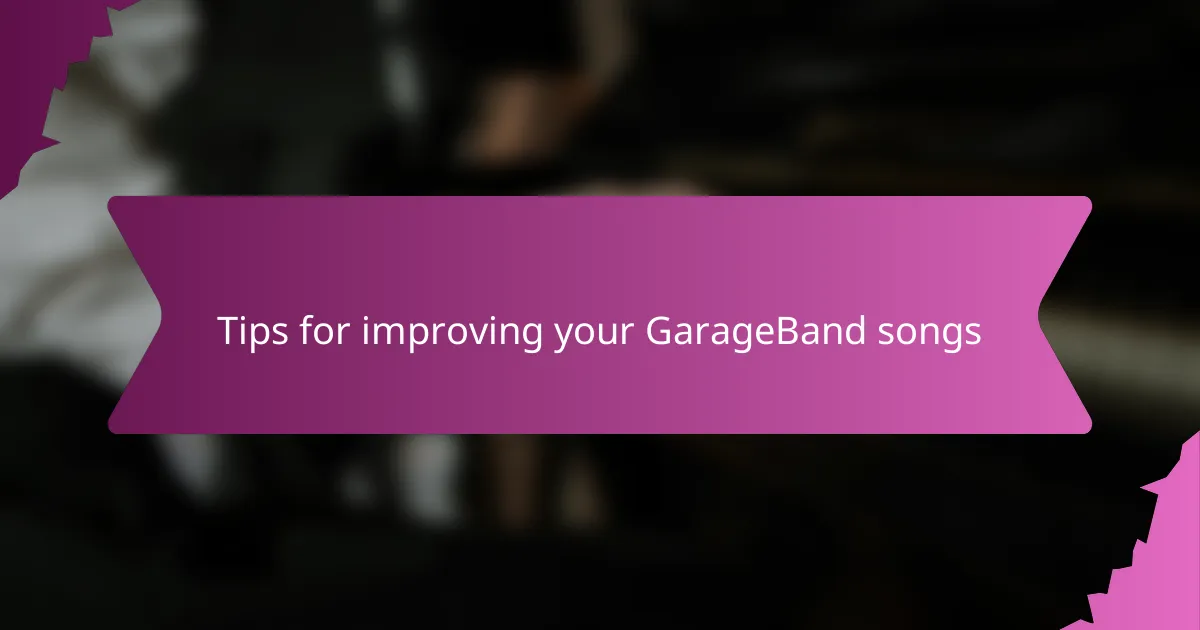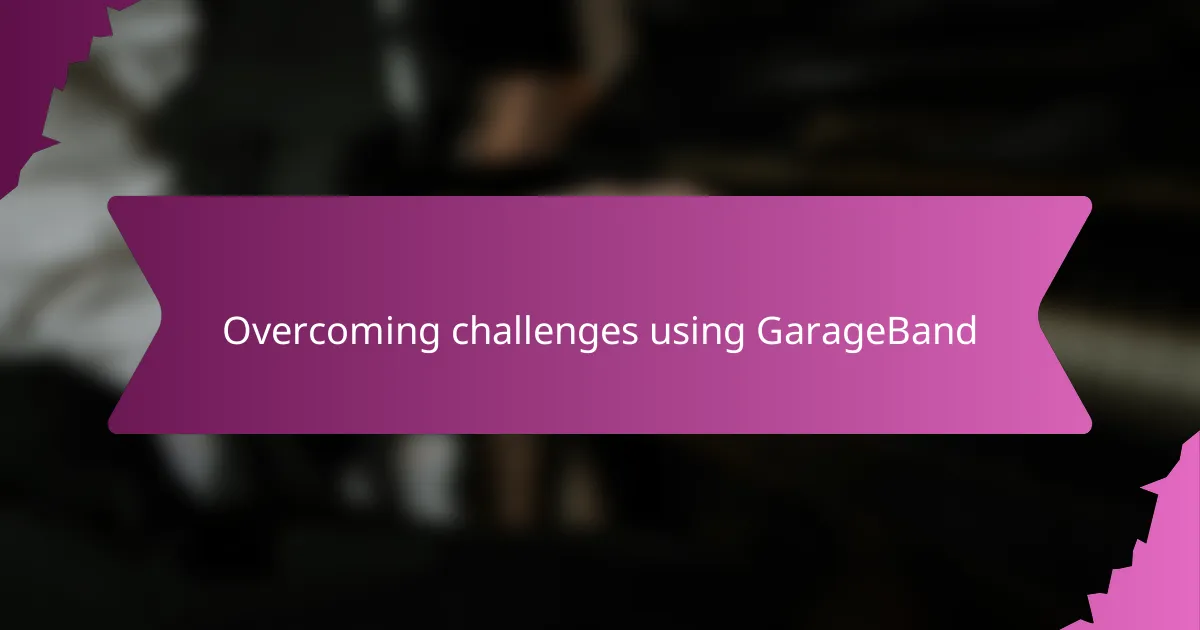Key takeaways
- GarageBand’s intuitive interface and drag-and-drop functionality make it user-friendly for songwriters, fostering creativity without technical distractions.
- Customizing project settings, organizing tracks, and setting up virtual instruments enhances workflow and personalizes the songwriting process.
- Using tools like the virtual keyboard and smart drummer, along with exploring loops, can inspire creativity and provide a solid musical foundation.
- Implementing automation and taking breaks to gain fresh perspectives are crucial for improving song dynamics and clarity in mixes.

Understanding GarageBand basics
Getting the hang of GarageBand’s interface was surprisingly intuitive for me. I remember feeling a mix of excitement and slight overwhelm when I first opened the software—so many tracks, loops, and controls at my fingertips. Have you ever stared at a new tool wondering where to start? That was me, but GarageBand’s layout made it easy to dive right in and experiment.
One feature that stood out early on was the drag-and-drop functionality. It felt almost like playing with building blocks—layering beats, melodies, and vocals became a creative playground rather than a technical challenge. This simplicity empowered me to focus more on songwriting and less on figuring out complicated software menus.
Understanding how to navigate the timeline and arrange sections was another breakthrough moment. Once I grasped how to loop sections and adjust track lengths, I could shape my song’s structure naturally. It made me appreciate how GarageBand blends beginner-friendly tools with enough depth to grow alongside your skills.

Setting up GarageBand for songwriting
Setting up GarageBand for songwriting felt like setting the stage for a creative session. I remember customizing my project settings—choosing tempo, key, and time signature—and it instantly made the process feel more personal, like tailoring a blank canvas specifically for my musical ideas. Have you ever adjusted something small that suddenly makes everything click? That was the moment I realized how important these initial choices are.
Next, I made a habit of organizing my tracks with color codes and clear labels. At first, it seemed like extra work, but soon I noticed how much smoother my workflow became. It’s funny how a little order can bring so much clarity, especially when inspiration hits and ideas come fast.
Finally, setting up my preferred virtual instruments and saving custom presets saved me time and kept me in the creative zone. I learned the hard way that fumbling with settings mid-song can kill the vibe—so having everything ready to go was a game changer for staying focused on songwriting instead of technical distractions.

Essential tools for songwriting in GarageBand
One of the essential tools I kept returning to in GarageBand was the virtual keyboard. Honestly, having an instrument right on my screen meant I could sketch out melodies anytime inspiration struck, even when I didn’t have my actual piano nearby. Have you ever wished you could capture that fleeting tune before it disappears? This tool made that possible for me, and it felt like having a constant creative companion.
Another feature that made a huge difference was the smart drummer. At first, I was skeptical—could an automated drum track really match my vibe? But after tweaking it, I realized how it provided a solid rhythmic backbone without overpowering my ideas. It’s like having a patient bandmate who knows just when to step in and support your song.
Then there’s the loop library, which became my secret weapon. Sometimes, when I hit a creative wall, I’d browse through the extensive collection of loops and suddenly a groove or texture would spark new directions for my songwriting. Isn’t it amazing how a simple sound clip can open doors to fresh inspiration? GarageBand’s loops turned moments of doubt into breakthroughs.

Step by step songwriting process
Starting the songwriting process in GarageBand always begins with laying down a basic idea—usually a chord progression or a catchy melody. I found myself recording quick snippets, not aiming for perfection right away but capturing the raw emotion that sparked the song. Have you ever caught yourself humming something and rushed to get it down before it vanished? That urgency to preserve the moment helped me stay true to my initial inspiration.
As the idea took shape, I moved on to building the song’s structure. I experimented with arranging different sections—verses, choruses, bridges—dragging and looping regions on the timeline until the flow felt natural. This hands-on tweaking sometimes meant trial and error, but it was incredibly rewarding when everything finally clicked together like pieces of a puzzle.
The final step was adding detailed touches: layering harmonies, refining drum patterns, and adjusting effects to create atmosphere. I remember spending an afternoon just playing with reverb and EQ, realizing how subtle changes could transform the mood completely. Isn’t it fascinating how tiny sonic details can turn a simple tune into a heartfelt story? GarageBand gave me the space to explore those nuances patiently and creatively.

Tips for improving your GarageBand songs
One tip that really changed how I improved my GarageBand songs was learning to use automation for volume and effects. At first, it felt a bit technical, but once I got the hang of gradually fading instruments in and out or boosting reverb at just the right moment, my tracks started sounding more dynamic and alive. Have you ever noticed how a simple volume tweak can make a chorus hit harder? That subtle control adds emotional depth.
Another trick I found invaluable was experimenting with layering different sounds and instruments, even ones I wouldn’t usually combine. Sometimes I’d throw in a weird synth patch under an acoustic guitar just to see what happens. It wasn’t always perfect, but those unexpected blends often led to fresh ideas I wouldn’t have discovered otherwise. Don’t you think breaking your own rules can unlock hidden creativity?
Finally, I can’t emphasize enough the importance of taking breaks from your project and returning with fresh ears. I used to dive in nonstop and miss small mix issues that only became obvious after stepping away. When I started giving myself that breathing room, I caught details I’d overlooked, and my songs gained clarity and balance. Have you tried listening to your track the next day? It’s amazing what a little distance reveals.

Overcoming challenges using GarageBand
Sometimes, GarageBand’s vast array of options felt overwhelming, especially when I was eager to get a song down quickly. I remember moments when I got stuck tweaking one setting endlessly, losing sight of the song itself. Have you ever felt trapped by choices instead of inspired by them? It took patience and a conscious decision to focus on the core of my music rather than perfecting every detail to truly move forward.
Another challenge was managing the limitations of the built-in instruments and loops. Early on, I kept wishing for sounds that weren’t there or effects that felt too basic. But instead of frustration, I started experimenting more—layering sounds, adjusting settings creatively, and even importing a few custom samples. This workaround taught me to embrace GarageBand’s strengths and get inventive, which ultimately enriched my songwriting process.
Lastly, I sometimes struggled with staying organized amid multiple tracks and ideas piling up. There were sessions where my project looked like a chaotic mess. Developing a habit of clear labeling and using track colors wasn’t just about neatness—it became essential for my workflow and peace of mind. Have you noticed how a tidy workspace can actually spark more creativity? For me, overcoming this challenge meant less stress and more time making music.